Choosing furniture for kids goes beyond just aesthetics; it's about creating a safe and nurturing environment where they can thrive. This article serves as your essential guide to selecting kid-friendly furniture that prioritizes safety, durability, and style, ensuring peace of mind for parents and a joyful space for children. Dive in to discover the key features to look for and learn how to furnish spaces that are both beautiful and built to withstand the energy of childhood.
1. Why is Prioritizing Safety and Durability in Kid-Friendly Furniture Essential?
When it comes to furnishing spaces for children, safety is paramount. Choosing child-friendly furniture isn't just about aesthetics; it's a crucial aspect of creating a nurturing and secure environment where kids can play and explore freely. Think about it – children spend a significant amount of time in their rooms, interacting with their furniture daily. This constant interaction makes it vital to ensure that every piece of furniture minimizes the risk of accidents and injuries. Durability is equally important. Kids are active; they play, climb, and sometimes, furniture becomes part of their adventurous games. Therefore, the furniture you choose must be able to withstand wear and tear, ensuring it remains safe and functional for years to come. Investing in durable materials means not only safety but also saving money in the long run by avoiding frequent replacements.
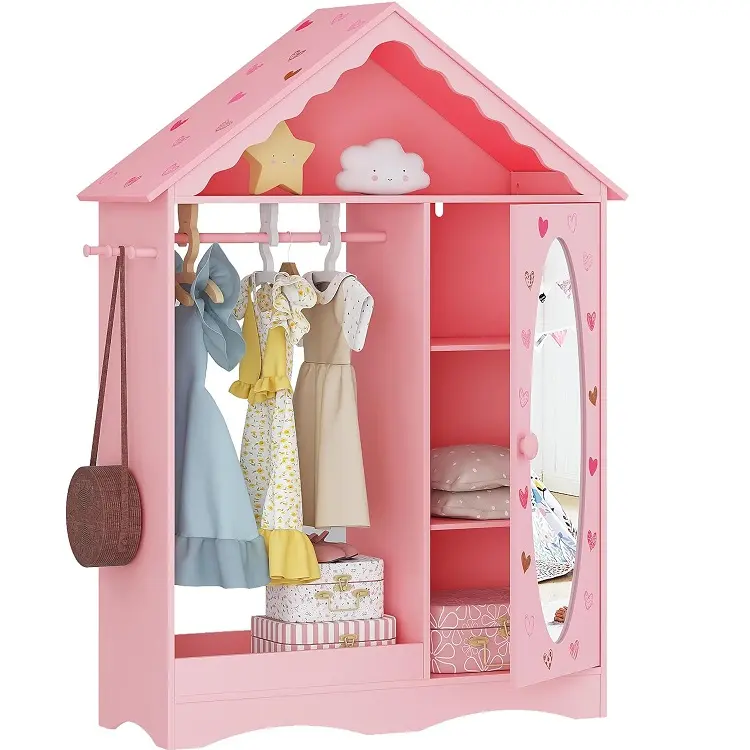
Prioritizing furniture safety and durability offers peace of mind. Knowing that your child's furniture is sturdy, stable, and free from harmful chemicals allows you to relax and let them enjoy their space without constant worry. Furthermore, durable furniture often means furniture made from solid wood and constructed with robust joinery, which inherently offers better stability and safety compared to flimsier alternatives. Ultimately, selecting kid-friendly furniture that emphasizes safety and durability is an investment in your child's well-being and a testament to creating a home where they can grow and thrive confidently.
2. What Key Furniture Safety Features Should You Look for in Kids' Room Furniture?
When selecting furniture for kids’ rooms, several safety features should be top priority. First and foremost, look for furniture with rounded edges and corners. This simple design element can significantly minimize the risk of injury from bumps and falls, which are common occurrences with active children. Avoid furniture with sharp edges that pose a hazard. Stability is another critical feature. Ensure that all furniture, especially taller pieces like bookshelves and wardrobes, are stable and not easily tipped over. It's wise to secure these items to the wall to prevent accidents, especially in homes with very young children who might climb. This is a simple step that greatly enhances furniture safety.
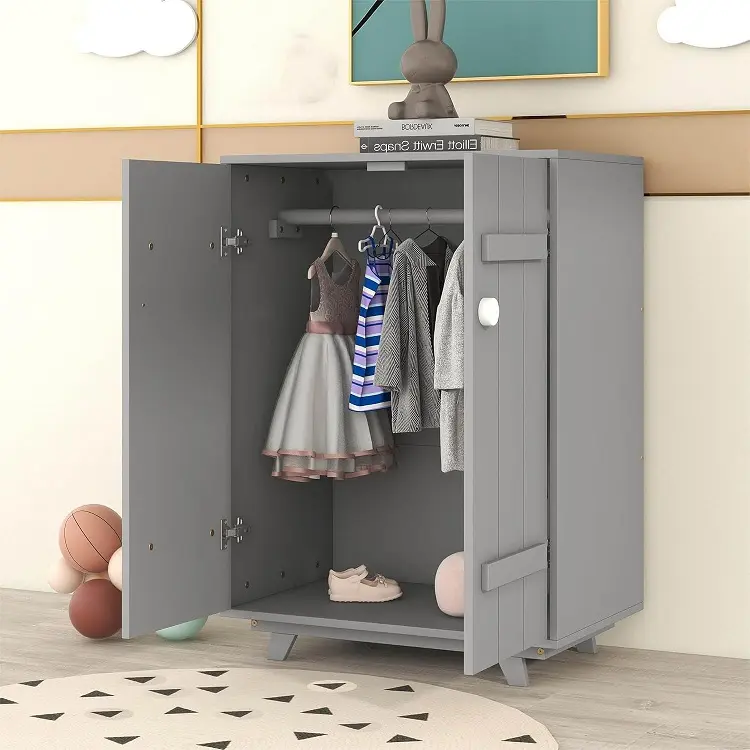
Another crucial safety aspect is the materials and finishes used. Opt for furniture made from non-toxic materials and finishes. This means looking for products that are free from harmful chemicals like lead, phthalates, and formaldehyde. Solid wood furniture is often a good choice as it is naturally sturdy and, when finished with non-toxic paints or stains, provides a safe option for kids. Also, consider the functionality of the furniture. For example, drawers and doors should have safety stops to prevent them from being pulled out completely and falling on a child. By carefully considering these features, you can select furniture that ensures safety and creates a secure environment for your little ones to play and grow.
3. How to Ensure Durability in Kid-Friendly Furniture for Long-Term Use?
Durability in kid-friendly furniture is not just about lasting longer; it's about ensuring that the furniture remains safe and functional throughout your child's growing years. To ensure durability, start by looking for furniture made from durable materials. Solid wood is an excellent choice due to its inherent strength and ability to withstand daily wear and tear. Unlike particleboard or MDF, solid wood furniture is less prone to damage from spills and impacts, making it ideal for kids’ spaces. Consider furniture construction as well. Look for pieces with robust joinery, such as dovetail joints in drawers and sturdy screws or bolts holding the frame together. Well-constructed furniture remains stable and safe, even with rough use.

The finish of the furniture also plays a significant role in its durability. Choose furniture with a finish that is easy to clean and resistant to stains and scratches. A durable finish not only keeps the furniture looking good for longer but also protects the underlying material from moisture and damage. For upholstery, opt for fabrics that are stain-resistant and easy to clean, or consider furniture with removable, washable covers. Investing in high-quality, durable furniture might seem more expensive upfront, but it proves to be cost-effective in the long run. Durable furniture lasts longer, reducing the need for frequent replacements and ensuring a safer environment for your children as they grow. Remember, choosing durable furniture is a smart way to balance safety and functionality without compromising on style or functionality.
4. What Non-Toxic Materials and Finishes Make Furniture Safe for Kids?
When furnishing a child's room, the materials and finishes of the furniture are just as crucial as the design and functionality. Opting for furniture made from non-toxic materials is essential to protect children from harmful chemicals. Solid wood furniture is a fantastic starting point. It's naturally sturdy and can be sourced sustainably. When considering wood furniture, inquire about the finishes. Look for water-based finishes or those labeled as low-VOC (Volatile Organic Compounds) or VOC-free. These finishes minimize the emission of harmful chemicals into the air, creating a healthier environment. Avoid furniture treated with formaldehyde-based adhesives or finishes, as formaldehyde is a known irritant and potential carcinogen.
For upholstered furniture, choose natural fibers like cotton or linen, and check for certifications that indicate low chemical emissions, such as GREENGUARD Gold. This certification ensures that furniture has been tested and meets strict chemical emission limits, making it safer for indoor use, especially in children's rooms. When it comes to paint, select paints that are labeled as non-toxic and lead-free. Milk paint and clay paint are natural, non-toxic options that provide a beautiful finish and are safe for children's furniture. By prioritizing non-toxic materials and finishes, you are creating a space that’s not only beautiful but also safe and healthy for your children to grow and play in. Remember, furniture made from non-toxic materials contributes significantly to a healthier home environment and peace of mind for parents.
5. Rounded Edges and Corners: Why Are They a Must-Have for Furniture Safety?
Rounded edges and corners are not just a design preference in kid-friendly furniture; they are a fundamental safety feature. Children are naturally active and sometimes clumsy, and bumps and falls are part of their daily exploration. Furniture with sharp edges and corners dramatically increases the risk of injury during these inevitable tumbles. Imagine a child running around and accidentally bumping into a sharp corner of a table or bookshelf – the potential for cuts, bruises, or more serious injuries is significant. Furniture with rounded edges and corners minimizes this risk considerably. The gentle curves soften the impact, reducing the severity of injuries should a collision occur.
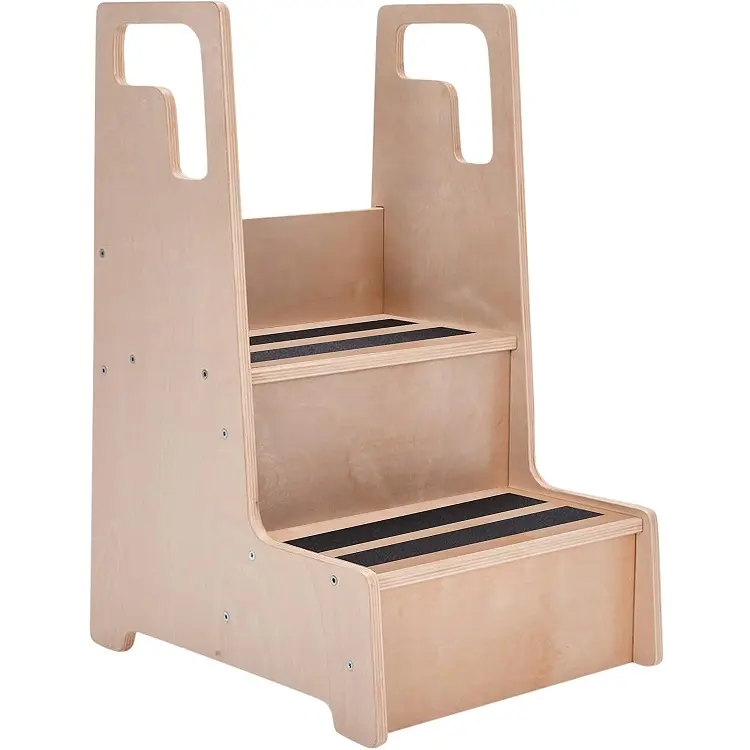
This safety feature is especially crucial in furniture designed for younger children, such as cribs, toddler beds, tables, and chairs. When selecting furniture for a nursery or playroom, prioritize furniture with rounded corners and edges. It’s a simple yet highly effective way to create a safer environment for children to play and explore. Many manufacturers of kid-friendly furniture understand this importance and incorporate rounded edges as a standard safety feature in their designs. Therefore, when you look for furniture for kids, make furniture with rounded edges and corners a non-negotiable feature – it's a small detail that makes a big difference in ensuring furniture safety.
6. Adjustable and Convertible Furniture: How Do They Contribute to a Kid-Friendly Space?
Adjustable and convertible furniture offers remarkable versatility and longevity, making them ideal choices for a kid-friendly space. As children grow, their needs change rapidly. Adjustable furniture adapts to these changes, providing functionality at different stages of development. For instance, an adjustable desk can be raised as a child gets taller, ensuring ergonomic comfort and promoting good posture throughout their school years. Similarly, convertible cribs that transform into toddler beds and then full-size beds offer a seamless transition and eliminate the need to buy new beds as the child grows. This adaptability not only maximizes the lifespan of the furniture but also represents a smart, economical choice for parents.
Convertible furniture also helps in creating a space that’s truly kid-friendly by being multi-functional. A sofa bed in a playroom can serve as a comfortable seating area during the day and convert into a bed for sleepovers. Storage solutions that can be reconfigured as per changing needs, like modular shelving units, add to the flexibility of the space. Furniture with built-in storage is particularly valuable in kids' rooms, helping to keep toys and clutter organized, thus creating a safer and more conducive environment for play and study. Investing in adjustable and convertible furniture is a practical approach to furnishing kids’ rooms, ensuring that the furniture remains relevant, functional, and safe as the child grows and their needs evolve. This type of furniture reflects a thoughtful approach to creating a kid-friendly space that is both adaptable and enduring.
7. The Role of Storage Solutions in Creating a Safe and Kid-Friendly Environment?
Storage solutions are integral to creating a safe and kid-friendly environment. A clutter-free space is inherently safer, as it reduces tripping hazards and allows children to move around freely without obstacles. In kids’ rooms, toys, books, and art supplies can quickly accumulate, leading to chaos if not properly organized. Furniture with built-in storage, such as beds with drawers underneath, toy chests, and bookshelves, are invaluable in keeping things tidy and accessible. Effective storage solutions not only make the space look neater but also teach children organizational skills from a young age.
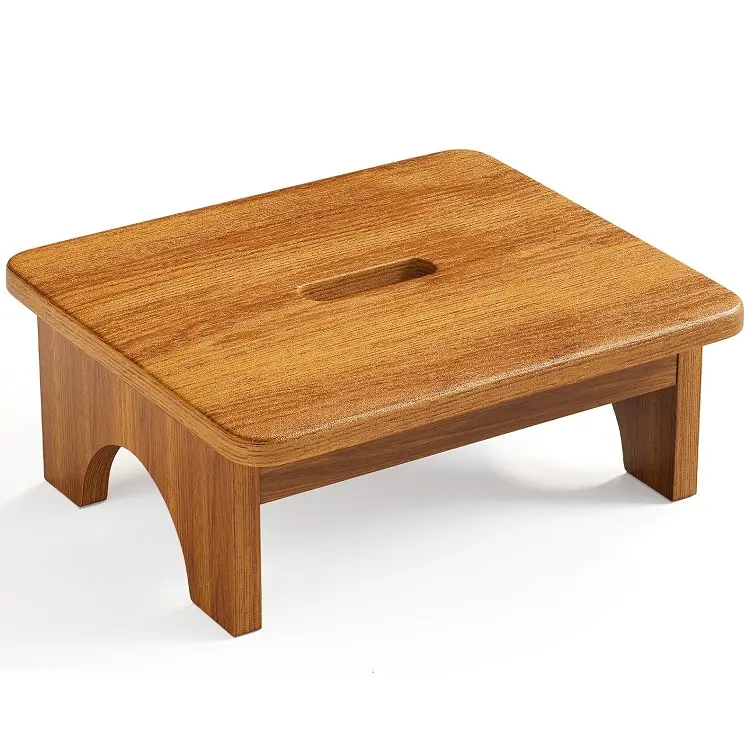
When choosing storage furniture, prioritize safety. Ensure toy chests have safety hinges that prevent the lid from slamming shut and potentially injuring little fingers. Bookshelves should be stable and ideally anchored to the wall to prevent tipping. Opt for storage bins and baskets made from soft, non-toxic materials without sharp edges. Consider storage options that are easy for children to use independently, encouraging them to participate in tidying up their space. Well-planned storage solutions are not just about organization; they are about creating a creating a safe and functional environment where kids can play, learn, and grow without the hazards of clutter. By incorporating smart storage furniture, you can significantly enhance the safety and functionality of any kid-friendly space. You can explore various storage options to find the perfect fit for your needs.
8. How to Choose Furniture That Balances Safety, Functionality, and Style?
Choosing furniture that balances safety, functionality, and style for kids’ rooms might seem like a tall order, but it is entirely achievable. The key is to prioritize safety features without compromising on either functionality or aesthetic appeal. Start by identifying your safety must-haves: rounded edges, non-toxic materials, and stable construction. Once you have these as your baseline, you can explore furniture styles that align with your taste and the room's décor. Functionality should be your next consideration. Think about how the furniture will be used and choose pieces that meet those needs effectively. For example, if storage is a priority, look for beds with drawers or bookshelves with ample space. If the room is small, opt for space-saving solutions like bunk beds or convertible furniture.
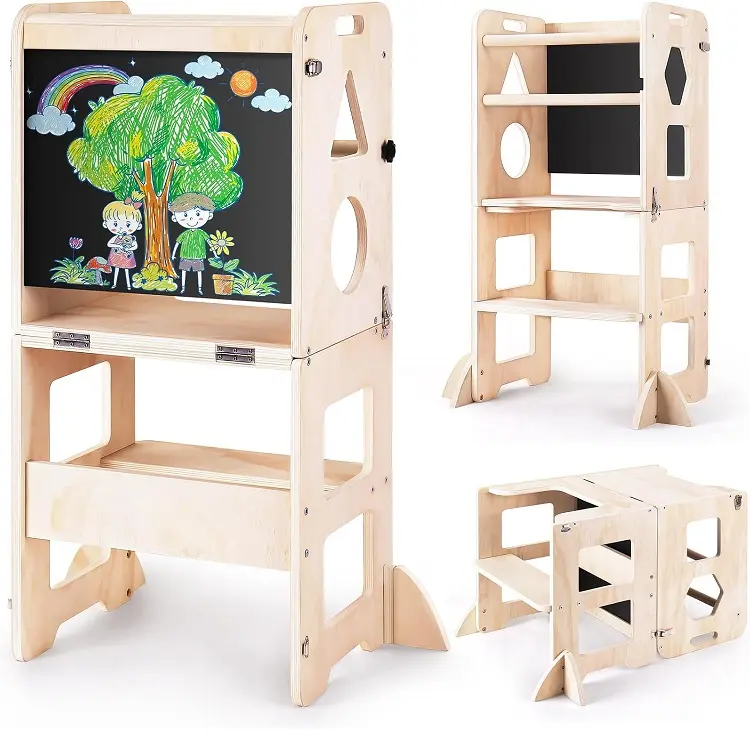
Don't feel you have to compromise on style or functionality for safety. Many furniture manufacturers now design kid-friendly furniture that is both safe and stylish. Look for designs that are appealing to both children and adults, creating a space that’s enjoyable for kids and aesthetically pleasing for parents. Consider incorporating color and playful elements through accessories and décor rather than just the furniture itself, allowing you to choose furniture in classic, versatile styles that are safe and durable. By thoughtfully balancing these three aspects – safety, functionality, and style – you can create a kid-friendly space that is not only safe and practical but also beautiful and inviting. Remember to choose furniture that reflects your personal style while ensuring it meets all the necessary safety standards for your children. You can find inspiration in sets like the Kids Wood Table & 2 Chairs Set, which combine functionality and appealing design.
9. What Safety Standards and Certifications Should You Look for When Selecting Furniture?
When selecting kid-friendly furniture, paying attention to safety standards and certifications is crucial for ensuring that the furniture meets recognized safety benchmarks. Several certifications indicate that furniture has undergone testing and complies with specific safety requirements. In the USA, look for furniture that meets ASTM (American Society for Testing and Materials) standards. For children's furniture, ASTM F2057 is particularly relevant, covering safety specifications for clothing storage units to prevent tip-over hazards. In Europe, the EN 71 standard specifies safety requirements for toys, which also extends to children's furniture in many aspects, particularly regarding non-toxic materials and construction.
GREENGUARD Certification is another important one to look for, especially concerning indoor air quality. GREENGUARD Certified products are low-emitting, meaning they release fewer chemicals into the air, contributing to a healthier indoor environment. GREENGUARD Gold Certification has even stricter criteria, making it ideal for sensitive environments like schools and nurseries, and thus, highly suitable for kids' rooms. When buying furniture, always check product descriptions or labels for these certifications. Don't hesitate to ask retailers or manufacturers for certification documentation if it's not readily available. Looking for certifications like GREENGUARD or compliance with ASTM or EN standards provides peace of mind, assuring you that the furniture you are choosing has been vetted for safety and is appropriate for use by children. Prioritize safety standards to ensure you are selecting the safest furniture options for your kids.
10. Creating a Kid-Friendly Space: Practical Tips for Furnishing Your Child's Room?
Creating a kid-friendly space is about more than just buying furniture; it's about thoughtfully designing an environment that supports your child's growth, play, and comfort while ensuring safety is always top priority. Start by planning the layout of the room to maximize space for play and movement. Avoid overcrowding the room with too much furniture. Choose furniture pieces that are appropriately sized for your child. For instance, chairs and tables should be at a comfortable height for them to use easily. Incorporate storage solutions generously to keep the room organized and clutter-free, which, as we discussed, enhances safety and reduces hazards.
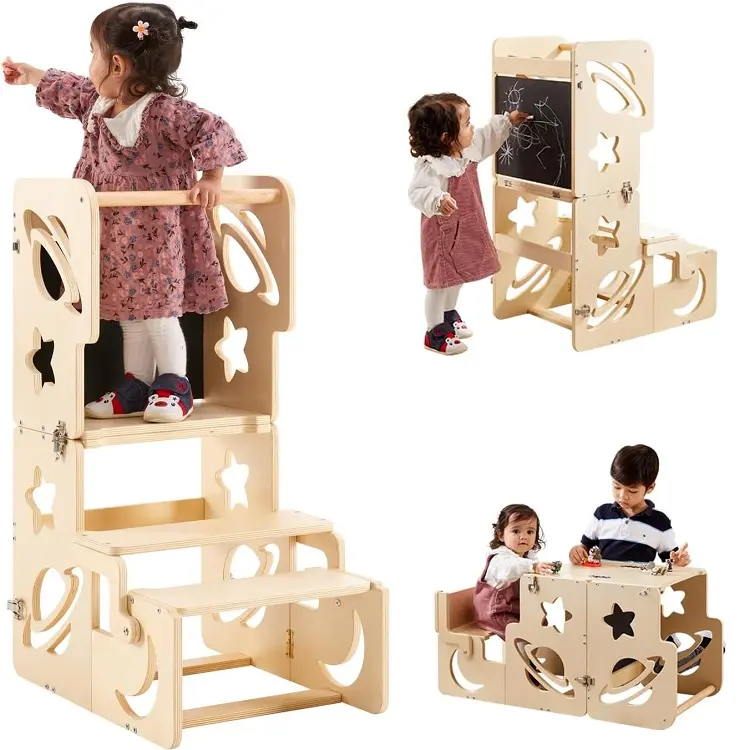
When furnishing, involve your child in the process if they are old enough. Letting them have a say in the décor and furniture choices can make them feel more connected to their space and encourage them to keep it tidy. Personalize the space with elements that reflect their interests and personality, such as artwork, themed bedding, or favorite colors. Ensure good lighting in the room, combining natural light with adequate artificial lighting for different times of the day. Finally, regularly inspect furniture for any signs of wear and tear or damage, and address them promptly to maintain safety. Creating a kid-friendly space is an ongoing process of adapting the environment to your child's evolving needs, always keeping safety, functionality, and comfort in mind. Consider adding a Wooden Kids Wardrobe for stylish and safe storage.
Key Things to Remember When Selecting Kid-Friendly Furniture:
- Safety First: Always prioritize safety features like rounded edges, stable construction, and non-toxic materials.
- Durability Matters: Choose durable materials like solid wood that can withstand wear and tear.
- Non-Toxic is Essential: Opt for furniture with non-toxic finishes and materials, looking for certifications like GREENGUARD.
- Rounded Edges and Corners: Ensure furniture has rounded edges and corners to minimize injury risk.
- Storage Solutions are Key: Incorporate ample storage to keep the space organized and safe.
- Adjustability and Convertibility: Consider adjustable and convertible furniture for longevity and adaptability.
- Check Safety Standards: Look for furniture that meets ASTM or EN safety standards.
- Balance Functionality and Style: Choose furniture that is not only safe but also functional and aesthetically pleasing.
- Involve Your Child: When possible, involve your child in the furniture selection process.
- Regular Maintenance: Regularly inspect and maintain furniture to ensure continued safety and durability.
By keeping these points in mind, you can confidently choose child-friendly furniture that creates a safe, functional, and joyful space for your children to thrive.
Post time: Feb-10-2025





